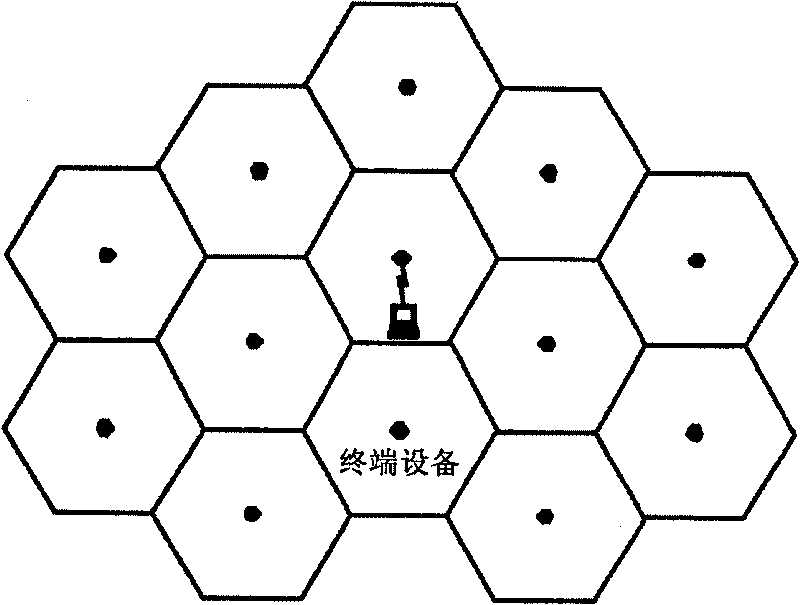Method for realizing cross-zone handoff in TD-SCDMA multi-frequency point cell
A TD-SCDMA, handover technology, applied in the field of handover, can solve the problems of co-frequency interference, communication interruption in the handover area, and the inability of TD-SCDMA network to use soft handover technology, so as to ensure communication quality and avoid co-frequency. the effect of interference
- Summary
- Abstract
- Description
- Claims
- Application Information
AI Technical Summary
Problems solved by technology
Method used
Image
Examples
Embodiment Construction
[0037] The present invention assumes that the TD-SCDMA multi-frequency point cell system configures mutually orthogonal wireless resources for the outer areas of adjacent cells, which are called handover reserved resources hereinafter. The mutual orthogonality means that the handover reserved resources or time slots or frequency points of adjacent cells are staggered from each other.
[0038] Taking the cellular network organized by TD-SCDMA multi-frequency cells as an example, the implementation of the handover method proposed by the present invention in conjunction with time slot scheduling will be described in detail below.
[0039] like Figure 6 shown. In a multi-frequency point cell system, the handover reserved resources can be unified on the same carrier, or can be allocated on different carriers. The number of specific reserved resources needs to be flexibly configured according to the requirements of the switching traffic. In this embodiment, it is assumed that th...
PUM
 Login to View More
Login to View More Abstract
Description
Claims
Application Information
 Login to View More
Login to View More - R&D
- Intellectual Property
- Life Sciences
- Materials
- Tech Scout
- Unparalleled Data Quality
- Higher Quality Content
- 60% Fewer Hallucinations
Browse by: Latest US Patents, China's latest patents, Technical Efficacy Thesaurus, Application Domain, Technology Topic, Popular Technical Reports.
© 2025 PatSnap. All rights reserved.Legal|Privacy policy|Modern Slavery Act Transparency Statement|Sitemap|About US| Contact US: help@patsnap.com



